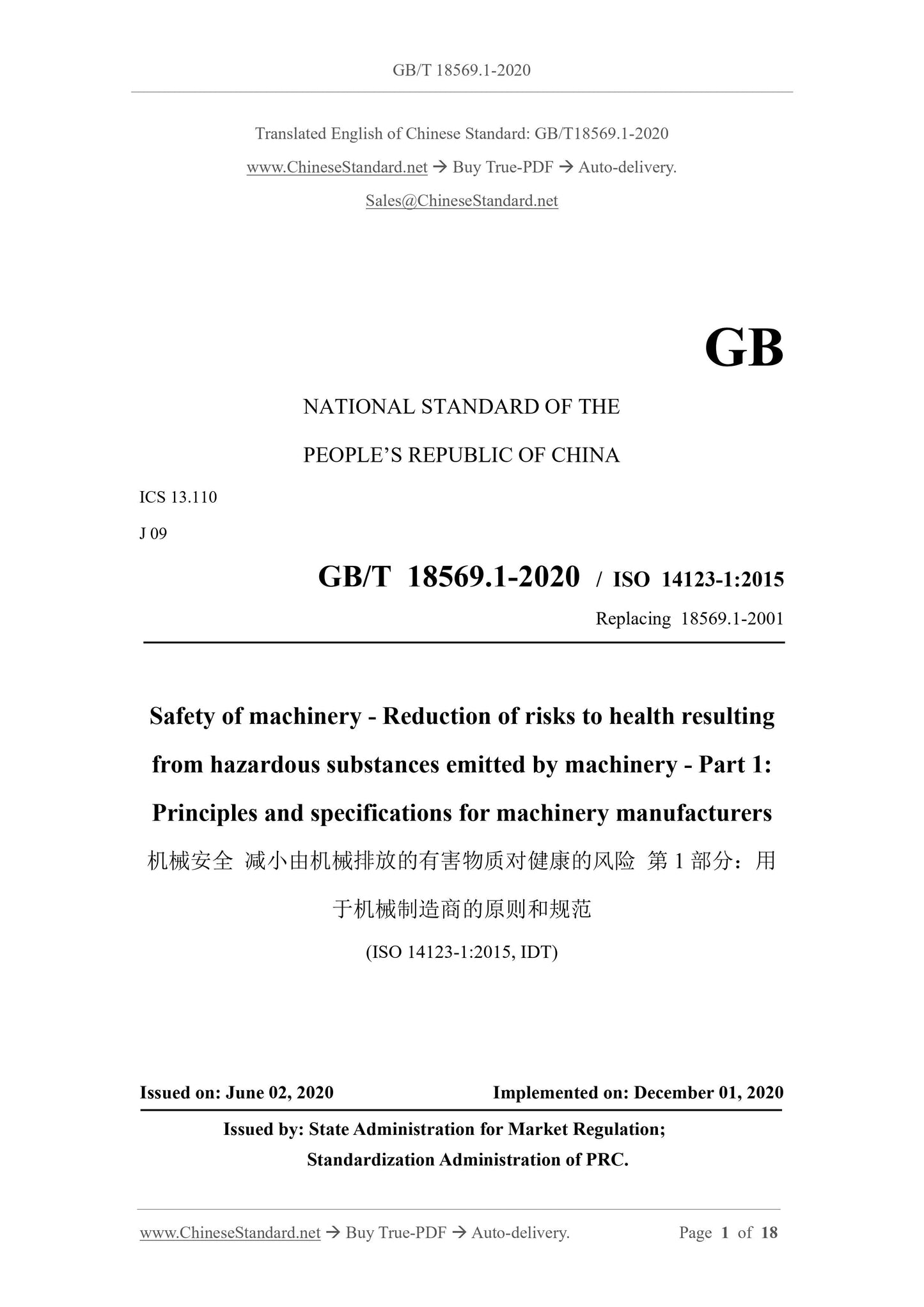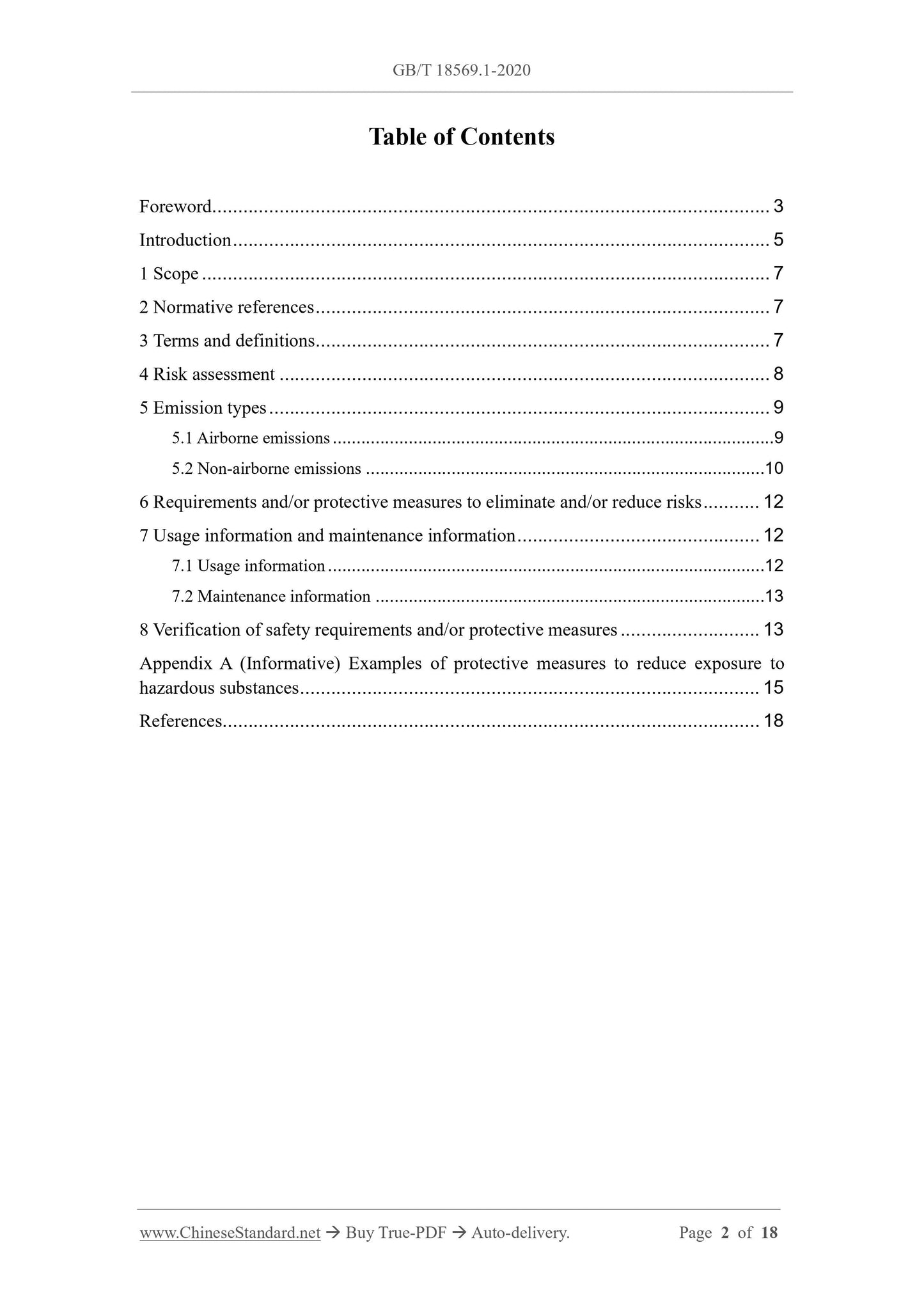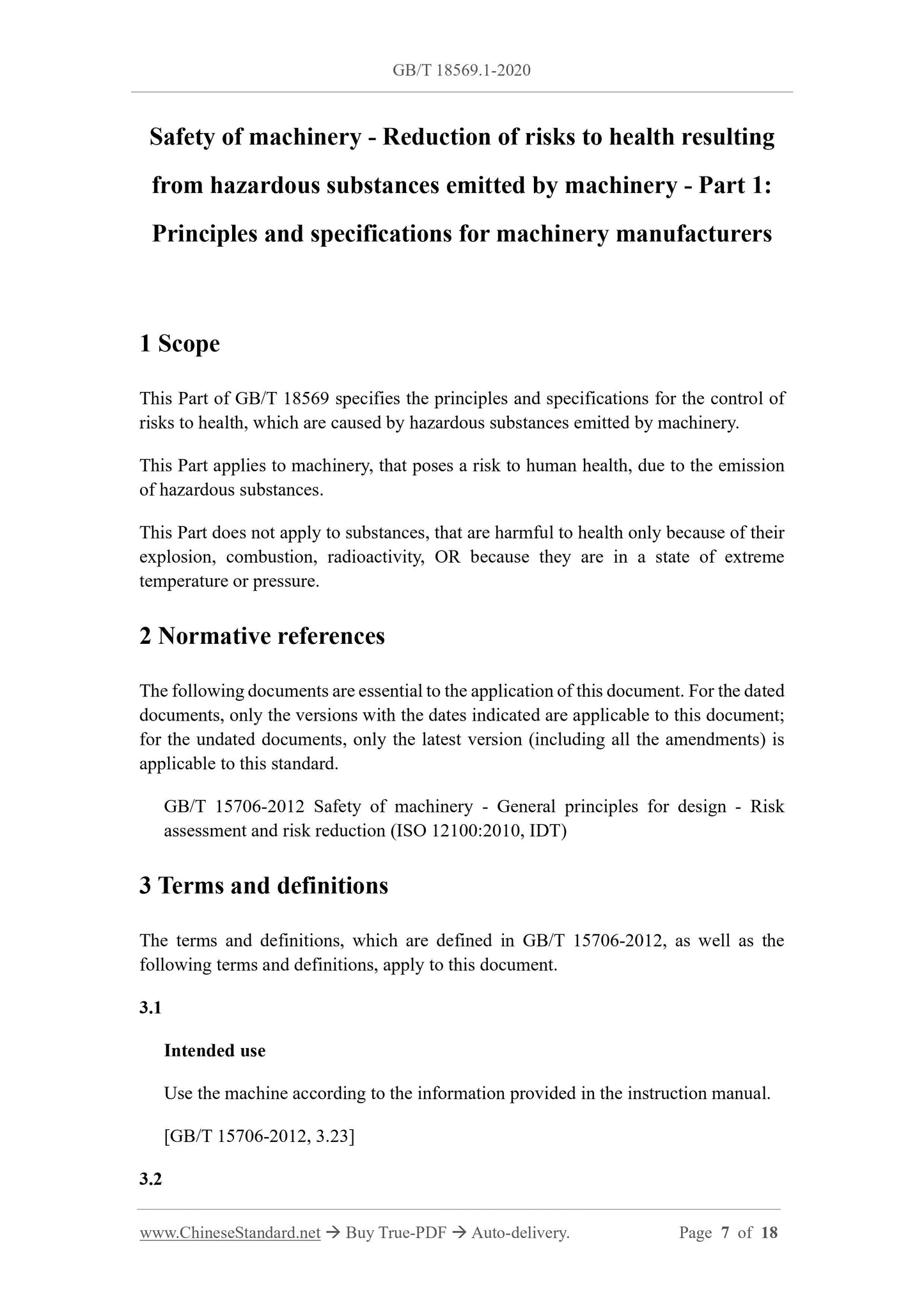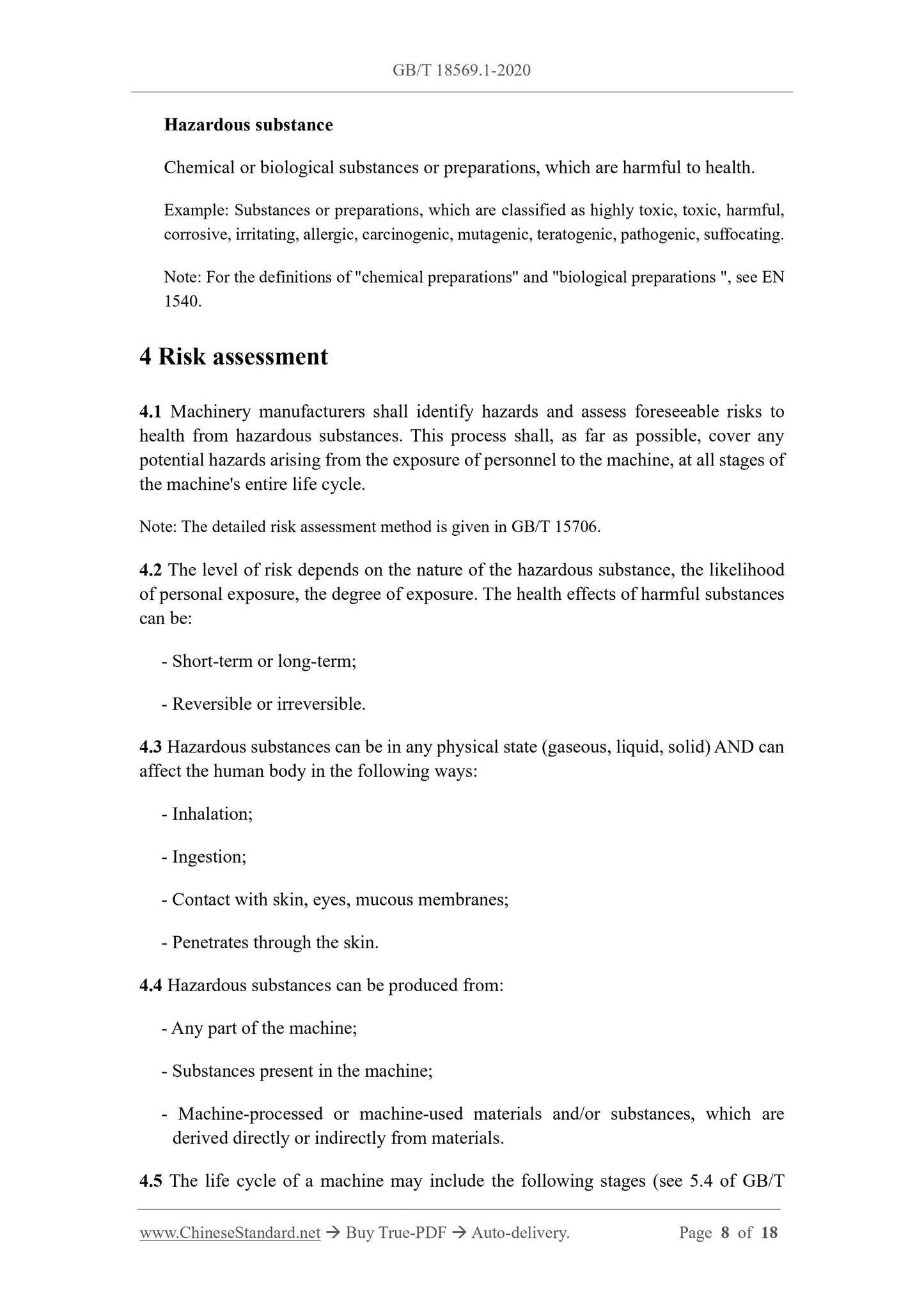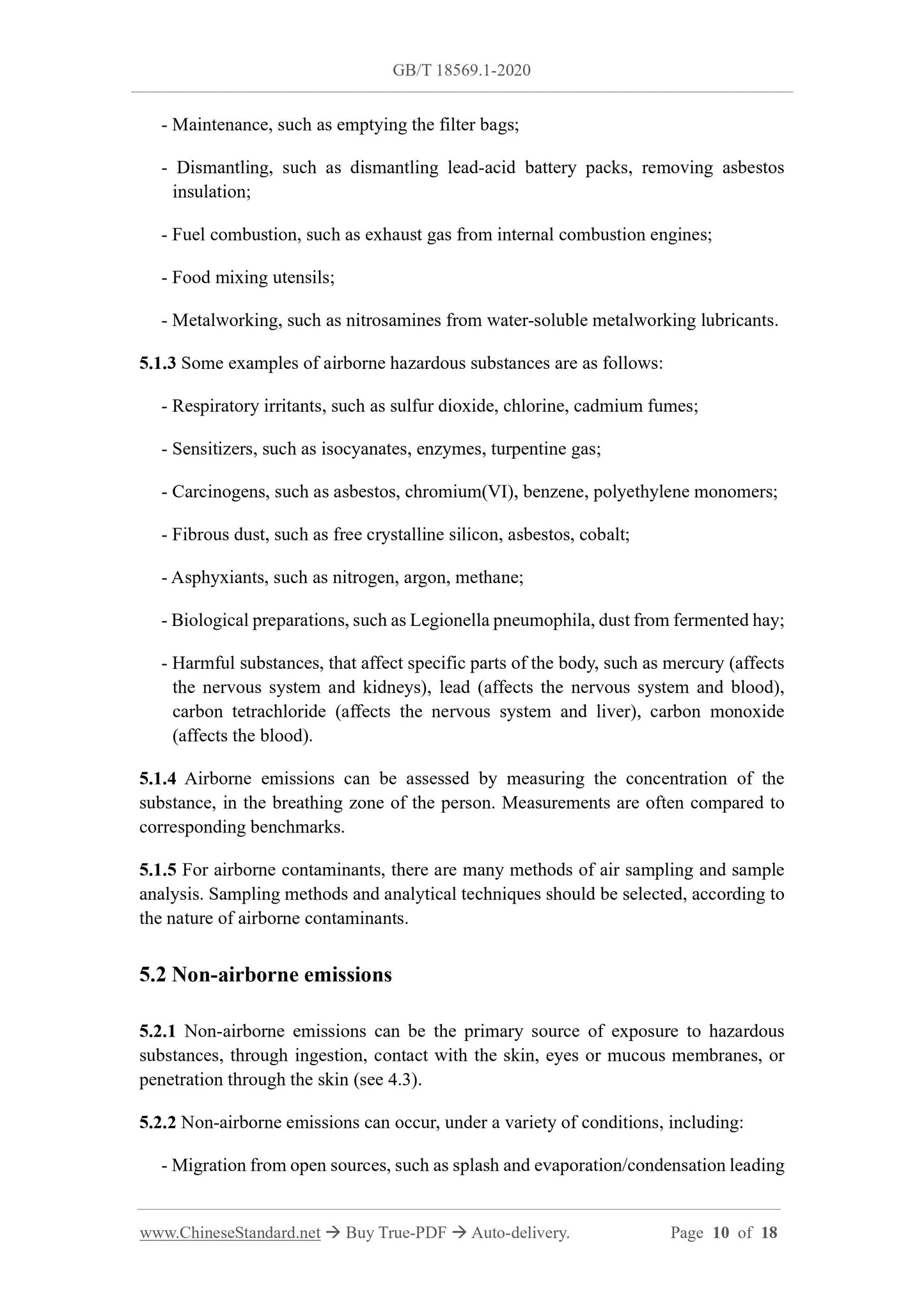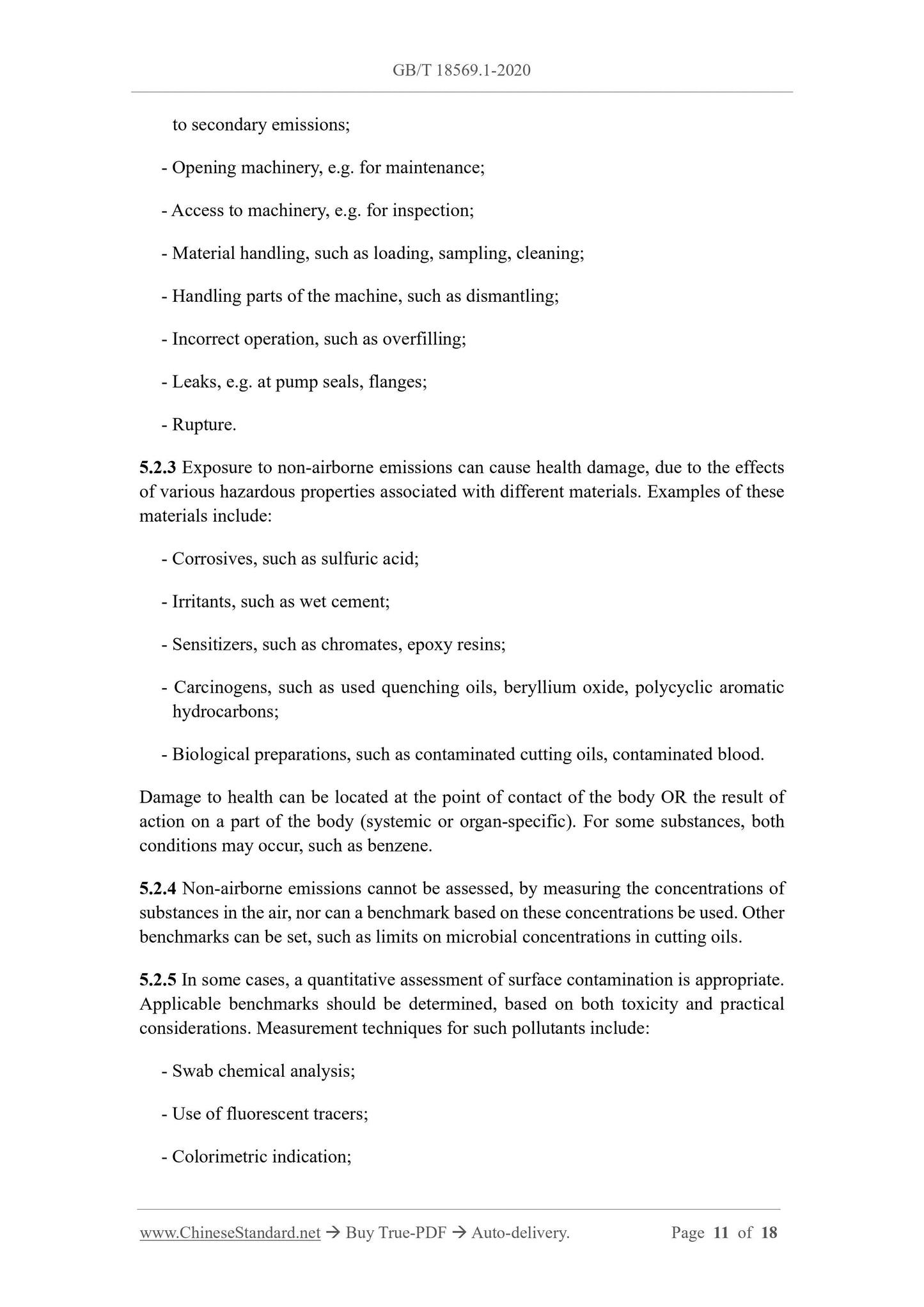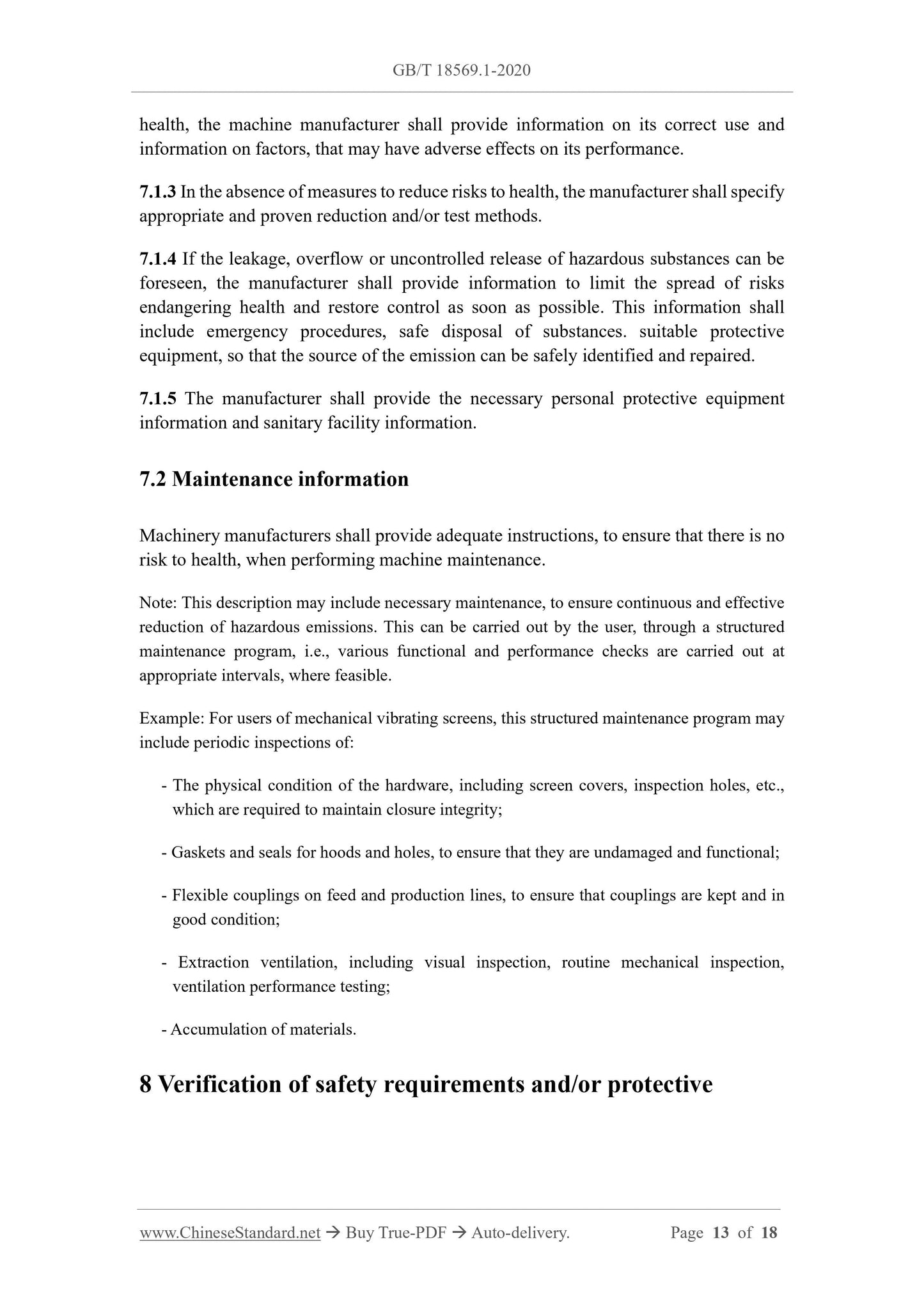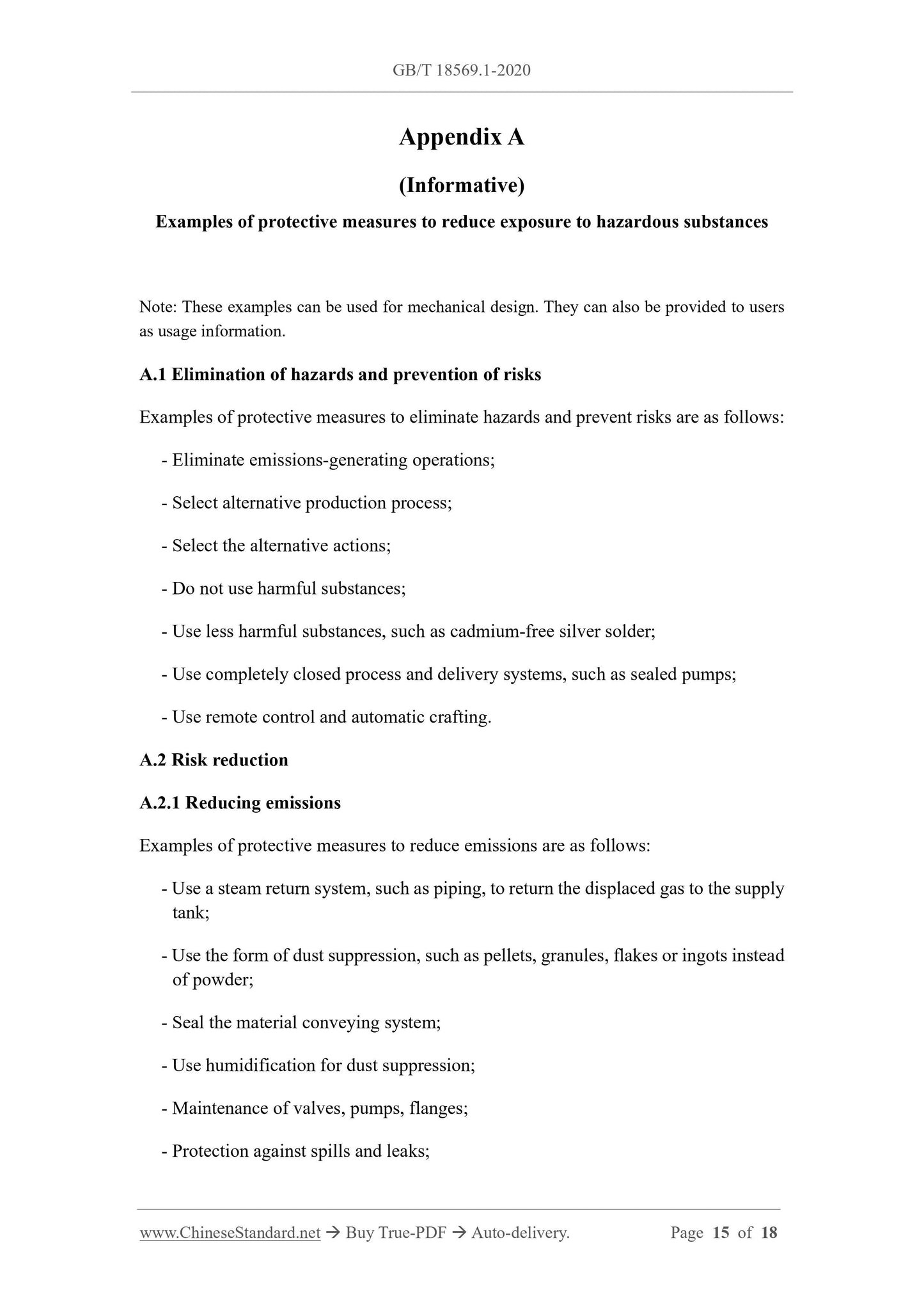1
/
of
8
www.ChineseStandard.us -- Field Test Asia Pte. Ltd.
GB/T 18569.1-2020 English PDF (GB/T18569.1-2020)
GB/T 18569.1-2020 English PDF (GB/T18569.1-2020)
Regular price
$165.00
Regular price
Sale price
$165.00
Unit price
/
per
Shipping calculated at checkout.
Couldn't load pickup availability
GB/T 18569.1-2020: Safety of machinery - Reduction of risks to health resulting from hazardous substances emitted by machinery - Part 1: Principles and specifications for machinery manufacturers
Delivery: 9 seconds. Download (and Email) true-PDF + Invoice.Get Quotation: Click GB/T 18569.1-2020 (Self-service in 1-minute)
Newer / historical versions: GB/T 18569.1-2020
Preview True-PDF
Scope
This Part of GB/T 18569 specifies the principles and specifications for the control ofrisks to health, which are caused by hazardous substances emitted by machinery.
This Part applies to machinery, that poses a risk to human health, due to the emission
of hazardous substances.
This Part does not apply to substances, that are harmful to health only because of their
explosion, combustion, radioactivity, OR because they are in a state of extreme
temperature or pressure.
Basic Data
| Standard ID | GB/T 18569.1-2020 (GB/T18569.1-2020) |
| Description (Translated English) | Safety of machinery - Reduction of risks to health resulting from hazardous substances emitted by machinery - Part 1: Principles and specifications for machinery manufacturers |
| Sector / Industry | National Standard (Recommended) |
| Classification of Chinese Standard | J09 |
| Classification of International Standard | 13.110 |
| Word Count Estimation | 10,153 |
| Date of Issue | 2020-06-02 |
| Date of Implementation | 2020-12-01 |
| Issuing agency(ies) | State Administration for Market Regulation, China National Standardization Administration |
Share
